Bibby Marine Orders First Battery and Methanol Powered eCSOV
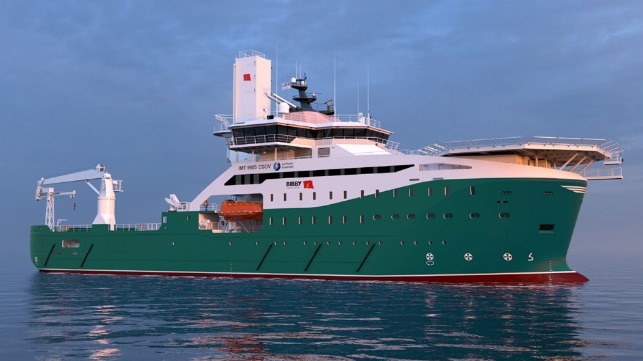
A shipbuilding contract has been completed for what is being called the “world’s first truly zero-emission, electric Commission Service Operation Vessel,” which is being built as part of UK sponsored demonstration project. The ship is expected to enter service in the UK in 2026 using a combination of a powerful battery system along with dual-fuel methanol engines.
A coalition of leading maritime companies led by Bibby Marine proposed the project as part of the UK’s Zero Emission Vessels and Infrastructure (ZEVI) project staged by the UK Department of Transportation. A total of £80 million was awarded to 10 projects in the 2022 round with the Bibby effort being awarded $25 million. They estimated the cost of the project for the vessel at $37.5 million total.
Bibby Marine reports that it completed a tender process and has selected Gondan to build the vessel. The Asturias shipyard in Spain won out of a variety of yards in the UK and internationally. Bibby cites the timeline, budget, and quality reputation as the deciding factors in the tender.
In the project proposal, the team called for a 295-foot vessel that would be primarily powered by electricity and batteries and have dual-fuel methanol-powered engines as backup. The ship will be ready for offshore charging and can recharge its batteries at night.
“The delivery of this vessel has the potential to be a game changer for our industry by accelerating our path to net zero, as well as showcasing marine innovation at its finest,” said Nigel Quinn, CEO of Bibby Marine. “This project will demonstrate that clean ships can be built at the same total cost of ownership as a conventional fossil burning vessel, coupled with significantly reduced operating costs.”
The eCSOV, which has been designed in collaboration with UK-based ship designers Longitude. To facilitate zero-emission operations, the eCSOV will feature high-voltage offshore charging facilities for rapid recharging. The vessel will have the capability to operate solely on battery power for over 16 hours between charging cycles.
Describing the project in their application for the funding grant, the team said they expect that it will be possible to operate the vessel with a two-week cycle onsite at an offshore wind farm emissions-free. Near shore and onsite the vessel will operate solely on battery power. For the longer transits between the shore homeports and the wind farms, the vessel will use its methanol fuel engines.
One of the challenges that ZEVI also looks to address is the need for offshore charging capabilities. In the application, the group said the CSOV would still achieve a 50 percent reduction in emissions compared to a conventional SOV, if offshore charging is not available
France’s TOWT Expands Sail Cargo Plans Ordering Six Additional Ships
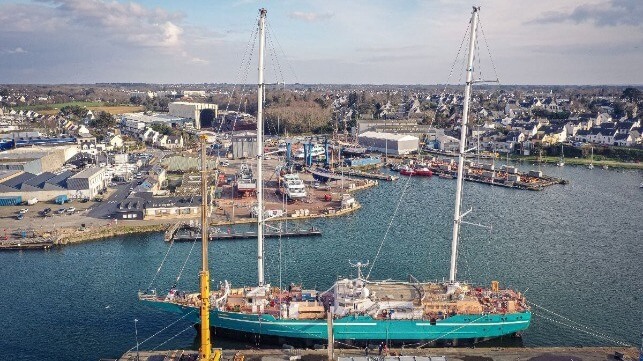
French sail shipping company TOWT (TransOceanic Wind Transport) announced ambitious growth plans for its vision of carbon-free cargo shipping. Even before the company launches its first two dedicated vessels in the coming months, they report strong demand and supported by leading investors ordered six additional vessels. They also shared a grand vision of 500 ships by 2050.
The concept is to transport niche cargoes in dedicated vessels that will be large enough to be economically viable. They point out that while current sail cargo operations are 35-ton vessels, the two ships now under construction in Vietnam at the Piriou shipyard will each be 1,000 tons. Each vessel is 260 feet in length with two mats and will be able to carry 1,100 tons of cargo. TOWT forecasts that the vessel will carry up to 20,000 tons of goods per year.
Today they are reporting the order of six additional vessels also to be built by the Piriou group. Three vessels should be ready for service in 2026 and the others in 2027. By 2028, the company forecasts it could have annual revenues of €60 million and the capacity to transport 200,000 tonnes annually.
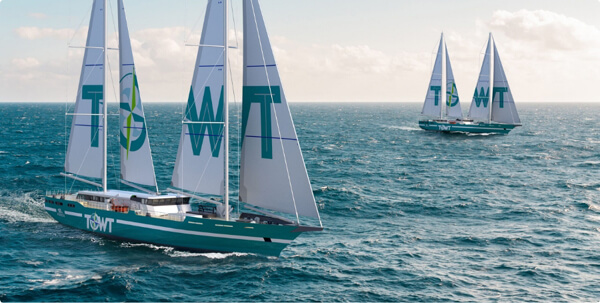
First two sail cargo ships will launch in June and July 2024 (TOWT)
"After two intense years of work, we are extremely happy and proud to take this significant step in the history of TOWT. With the construction of these 6 additional cargo sailboats, we are consolidating our position as a pioneer in the transport of goods by sail by increasing our fleet to 8 ships,” said Diana Mesa, co-founder and director general, and Guillaume Le Grand, co-founder and President of TOWT.
TOWT says each vessel will be moved by a set of sails with over 23,000 sq. feet of sail area providing speeds of approximately 10 knots. Operations will reduce carbon emissions by 95 percent compared to conventional cargo ships and they report strong interest from shippers.
The first two vessels, ordered in late 2021, are nearing completion with the masts having recently been raised on both ships. The company’s published schedule calls for Artemis to enter service in late June and Anemos in early July. The service will be primarily between Le Havre, France and New York as well as sailings to Colombia, Brazil, and Guadeloupe.
Atlantic crossings between Le Havre, France and New York are expected to take about two weeks. In addition to the cargo, the vessels will be able to carry up to 12 passengers and operate with a crew of seven.
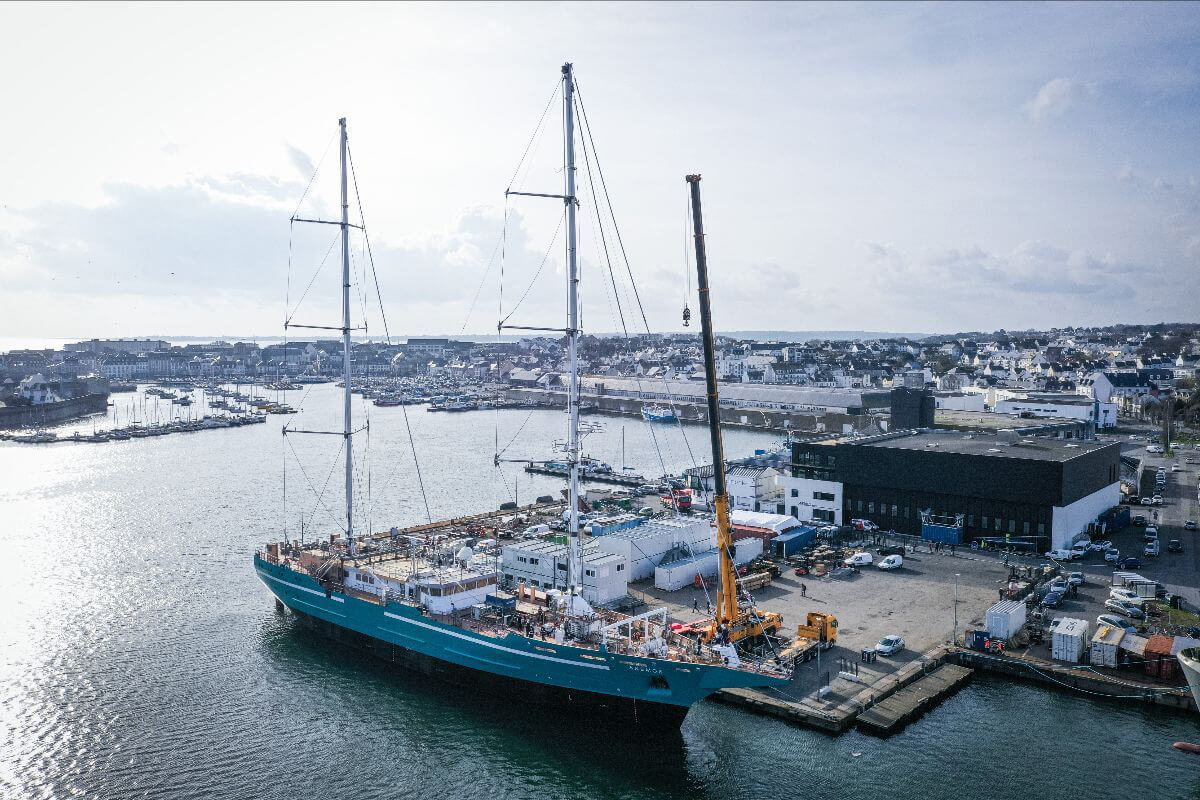
The company has been operating chartered sailing ships for 13 years and reports it has already transported more than two million products. They report having chartered 20 vessels and operating 70 trips. Recently they completed a new round of funding from well-known investors including Révolution Environnementale et Solidaire fund, Atlante Gestion, the Caisse des Deposits and Consignments, CIC, and Bpifrance. The general public also contributed €5 million coming from around 2,000 individuals.
The company reports the additional vessels will permit it to increase capacity and accelerate the frequency of departures. Their target is weekly sailings. They also look to open new routes with dedicated additional ships to Asia, Africa, and additional countries in South America.
Qatar Orders 18 World’s Largest LNG Carries in $6B Deal with China's CSSC
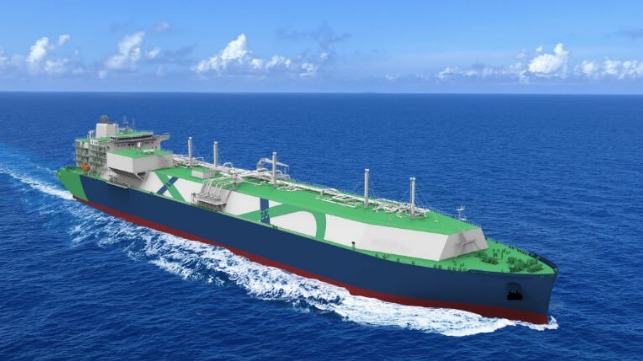
Qatar Energy and China State Shipbuilding Corporation are heralding an order for 18 of the world’s largest LNG carriers as the next phase in their relationship and support of the expansion of Qatar’s LNG operations. With the order valued at nearly $6 billion, it is being cited as possibly the largest single LNG order and one of the largest ever placed in the industry.
The new vessels will be part of an expanded QC-MAX size LNG carrier with a capacity of 271,000 cubic meters in five tanks. The current Q-Max vessels operating for Qatar have a capacity between 263,000 and 266,000 cubic meters of LNG. Qatar recently highlighted the bulk of the shipbuilding orders, which reached a total of 104 vessels, are the conventional size with a capacity of 174,000 cubic meters. Qatar Energy has also called the program the largest shipbuilding and leasing program in the history of the industry.
The order expands on the earlier reports in January 2024 that Qatar was building eight of the QC-Max class vessels in China. The order signed today calls for the first eight vessels to be delivered in 2028 and 2029, The other 10 vessels added to the order will be delivered in 2030 and 2031. All of them will be built by China’s Hudong-Zhonghua Shipyard. They also highlighted that the yard is already building 12 conventional-size LNG carriers with the first of the vessels due for delivery to Qatar in the third quarter of this year.
Each of the vessels will measure 1,128 feet (344 meters) with a design draft of just over 39 feet (12 meters). CSSC has previously highlighted that these dimensions mean the vessels will still be able to dock at 70 percent of the world’s LNG terminals.
They will use dual-fuel low-speed engines and they are highlighting a range of technological features. While they will increase the carry capacity by 57 percent. The design is optimized with a double skeg line and a lower evaporation rate, which means the vessels’ energy consumption of cargo transportation per ton per nautical mile is 9.9 percent lower than the conventional ships. They are also employing technology with a real-time sloshing monitoring system and a hull configuration stress monitoring system. CSSC says the carbon intensity index (CII) will be 23 lower than the conventional LNG carriers.
The countries highlighted that Qatar Energy is already a large supplier of LNG, crude oil, and other products to China. In 2023, Qatar shipped China 17 million tons of LNG. Sinopec. The Chinese energy company, last year acquired a small stake (less than 2 percent) in two sections of Qatar’s North Field Expansion.
Qatar Energy has also moved to expand relations with other majors including Total, Shell, Eni, and Petronet in advance of the launch of the North Field Expansion. Qatar which has been competing with the United States to be the largest exporter of LNG reports it will expand production by 85 percent by 2030 to a total of 142 million tonnes per annum (mtpa). Earlier this year Qatar Energy announced further expansion plans for the North Field reporting it holds 10 percent of the world’s LNG reserves.
No comments:
Post a Comment